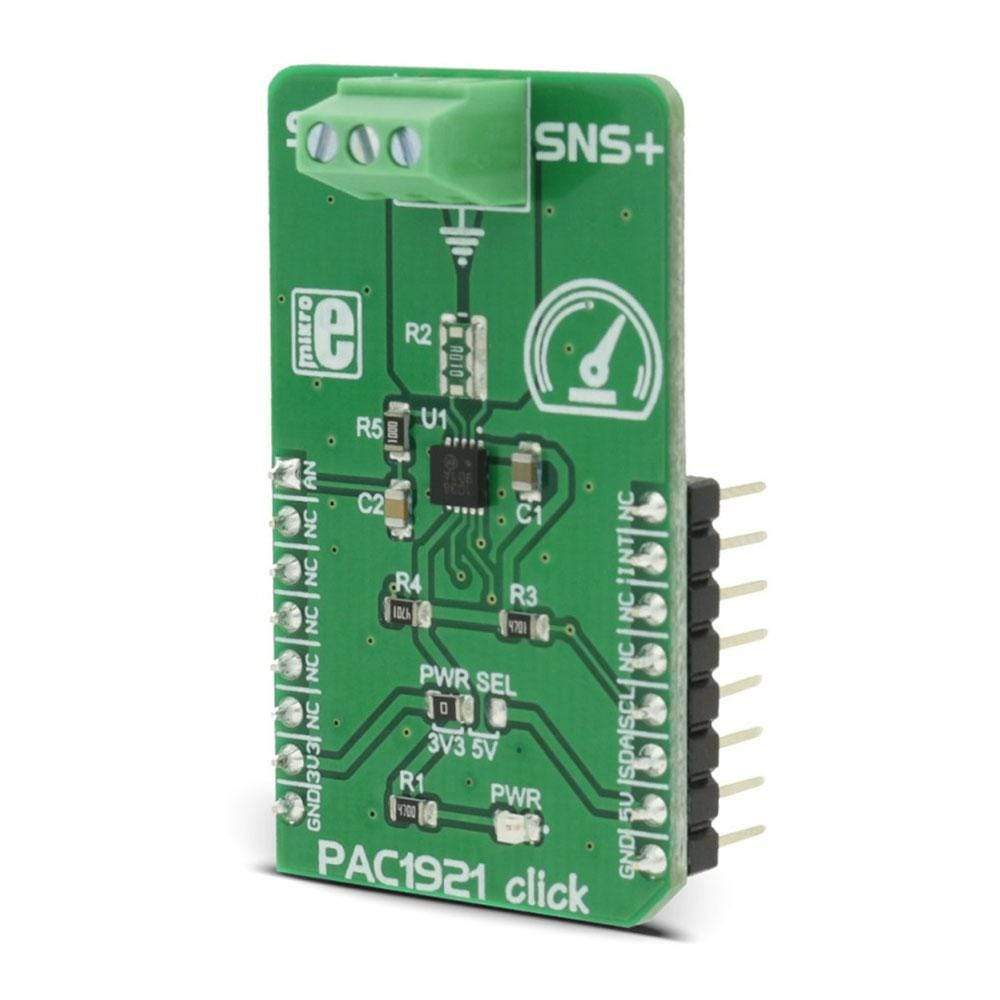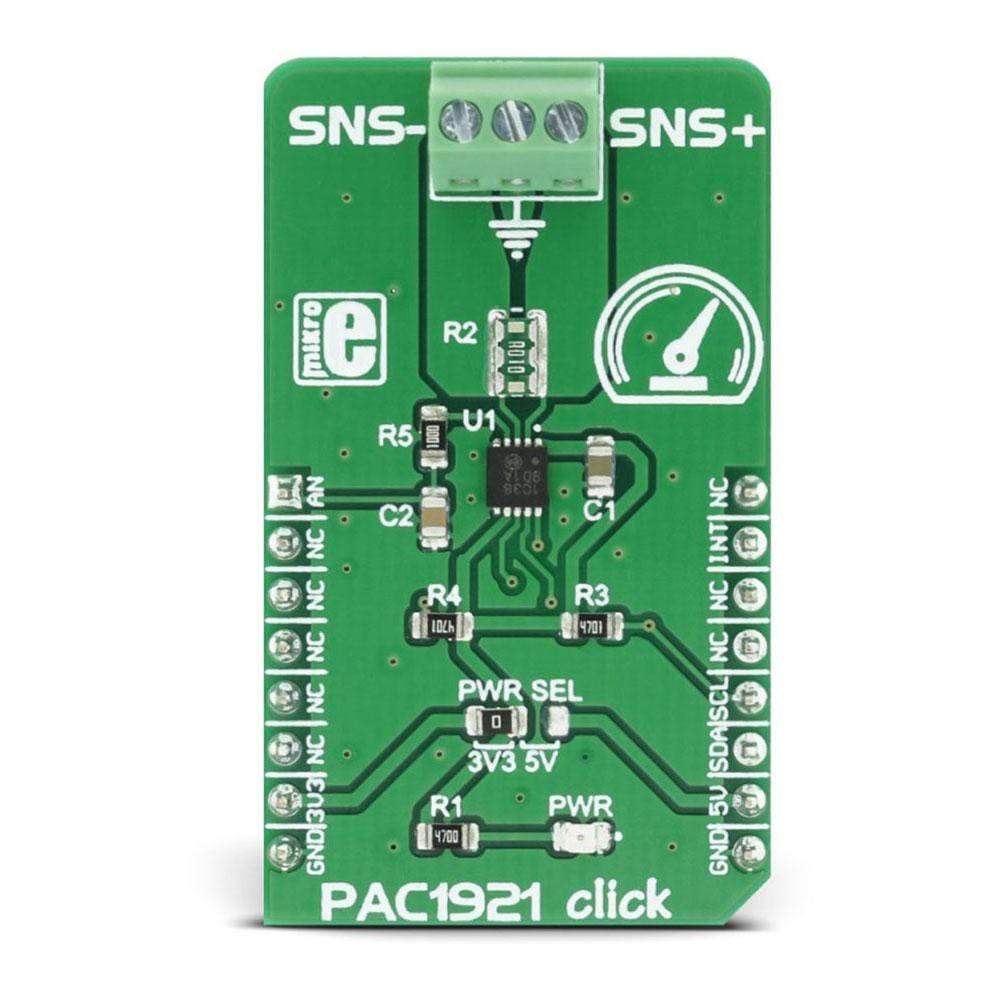


Overview
The PAC1921 Click Board™ is a versatile power monitoring and measuring device intended for the high speed, low latency measurements. This device can measure current, voltage or the power of the connected load. The PAC1921 Click Board™ features an integrated average power measurement, it can output the measured properties in the form of a filtered analog voltage level by using 10-bit DAC, provides 1x to 128x current binary gain, it has an integrated second order input ADC, automatic zero offset, and all the measured values are available through the serial SMBus/I2C interface.
Downloads
Das PAC1921 Click Board™ ist ein vielseitiges Leistungsüberwachungs- und Messgerät für Messungen mit hoher Geschwindigkeit und geringer Latenz. Dieses Gerät kann Strom, Spannung oder die Leistung der angeschlossenen Last messen. Das PAC1921 Click Board™ verfügt über eine integrierte Durchschnittsleistungsmessung, kann die gemessenen Eigenschaften in Form eines gefilterten analogen Spannungspegels mithilfe eines 10-Bit-DAC ausgeben, bietet eine binäre Stromverstärkung von 1x bis 128x, verfügt über einen integrierten ADC mit Eingang zweiter Ordnung, automatischen Nullpunktversatz und alle Messwerte sind über die serielle SMBus/I2C-Schnittstelle verfügbar.
| General Information | |
|---|---|
Part Number (SKU) |
MIKROE-2910
|
Manufacturer |
|
| Physical and Mechanical | |
Weight |
0.019 kg
|
| Other | |
Country of Origin |
|
HS Code Customs Tariff code
|
|
EAN |
8606018712410
|
Warranty |
|
Frequently Asked Questions
Have a Question?
Be the first to ask a question about this.



